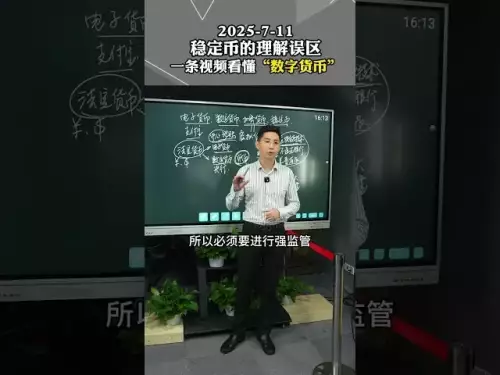-
 Bitcoin
Bitcoin $110600
-0.18% -
 Ethereum
Ethereum $4290
-0.22% -
 Tether USDt
Tether USDt $1.000
0.04% -
 XRP
XRP $2.820
0.15% -
 BNB
BNB $866.5
1.06% -
 Solana
Solana $202.6
0.14% -
 USDC
USDC $0.9998
-0.01% -
 Dogecoin
Dogecoin $0.2170
0.65% -
 TRON
TRON $0.3280
-0.85% -
 Cardano
Cardano $0.8269
0.26% -
 Hyperliquid
Hyperliquid $46.72
-0.52% -
 Chainlink
Chainlink $22.33
0.59% -
 Ethena USDe
Ethena USDe $1.001
0.00% -
 Sui
Sui $3.376
0.17% -
 Bitcoin Cash
Bitcoin Cash $600.1
-1.71% -
 Stellar
Stellar $0.3572
-0.15% -
 Avalanche
Avalanche $24.67
1.78% -
 Hedera
Hedera $0.2194
1.48% -
 Cronos
Cronos $0.2647
-3.52% -
 UNUS SED LEO
UNUS SED LEO $9.517
-0.57% -
 Litecoin
Litecoin $113.6
1.97% -
 Toncoin
Toncoin $3.087
0.29% -
 Shiba Inu
Shiba Inu $0.00001238
0.63% -
 Polkadot
Polkadot $3.859
0.73% -
 World Liberty Financial
World Liberty Financial $0.2421
31.55% -
 Uniswap
Uniswap $9.373
0.77% -
 Dai
Dai $0.9999
0.02% -
 Ethena
Ethena $0.7391
0.70% -
 Monero
Monero $268.5
-0.30% -
 Aave
Aave $301.9
0.08%
What is a block explorer API?
A block explorer API enables developers to access and interact with blockchain data, such as transactions, balances, and smart contracts, through structured endpoints.
Jul 04, 2025 at 05:07 am
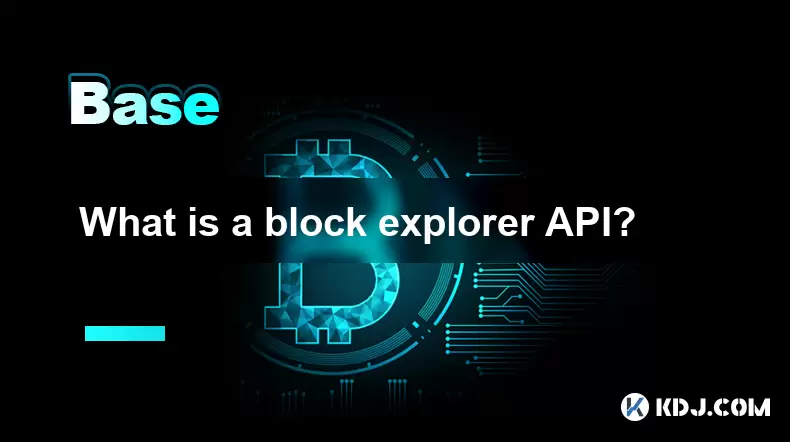
Understanding the Role of a Block Explorer API
A block explorer API is a crucial interface that enables developers and users to interact programmatically with blockchain data. Unlike traditional APIs used in web services, a block explorer API specifically provides access to blockchain-related information such as transaction details, wallet balances, block confirmations, and smart contract interactions. These APIs serve as bridges between blockchain networks and external applications, allowing for real-time querying and analysis.
One of the key functions of a block explorer API is to retrieve and display on-chain data in a structured format, typically JSON or XML. This allows developers to build tools, dashboards, and monitoring systems without needing to run a full node or parse raw blockchain data manually.
How Does a Block Explorer API Work?
The operation of a block explorer API revolves around exposing endpoints that correspond to specific blockchain queries. When a request is made to an API endpoint—such as fetching a transaction by hash or checking the balance of a wallet address—the API interacts with the underlying blockchain network or database to fetch and return the requested data.
- The user or application sends an HTTP request (GET or POST) to a specific API endpoint.
- The API processes this request and communicates with the blockchain node or database.
- It retrieves the relevant data and formats it into a consumable structure like JSON.
- The response is sent back to the requesting entity.
These steps ensure seamless interaction with blockchain data, enabling automation and integration into third-party platforms.
Common Use Cases for Block Explorer APIs
Developers leverage block explorer APIs for a wide range of applications. One of the most common use cases is integrating blockchain data into wallets and exchanges to provide real-time transaction tracking and balance updates.
- Monitoring incoming and outgoing transactions for a given address
- Validating transaction confirmations and status
- Analyzing blockchain trends through historical data retrieval
- Building custom dashboards for blockchain analytics
In addition, these APIs are essential for decentralized finance (DeFi) platforms and non-fungible token (NFT) marketplaces, where transparency and traceability are critical for user trust and system functionality.
Key Features of a Reliable Block Explorer API
When evaluating a block explorer API, certain features distinguish high-quality services from basic ones. A robust API should offer comprehensive data coverage, low latency responses, and strong rate limits management to prevent abuse.
- Support for multiple blockchain protocols (e.g., Ethereum, Bitcoin, Binance Smart Chain)
- Detailed documentation with example requests and responses
- Rate limiting and authentication mechanisms (like API keys)
- Webhook support for event-driven notifications (e.g., new transaction alerts)
These features ensure that developers can rely on consistent and accurate data while building scalable blockchain-based applications.
Popular Block Explorer APIs in the Market
Several well-established block explorer APIs exist today, each catering to different blockchain ecosystems. Etherscan, for instance, offers a powerful API for Ethereum-based queries, including contract interactions and token transfers.
Other notable providers include:
- Blockchair: Supports multiple chains like Bitcoin, Ethereum, and Litecoin.
- Blockstream.info: Offers a lightweight but reliable API for Bitcoin.
- BscScan: Tailored for Binance Smart Chain, providing detailed chain analytics.
- AlgoExplorer: Focused on the Algorand blockchain.
Each of these APIs has its own set of endpoints, query parameters, and response structures, so choosing the right one depends on the target blockchain and required functionality.
How to Use a Block Explorer API: A Step-by-Step Guide
To get started with a block explorer API, you first need to obtain an API key if the service requires authentication. Once you have access, follow these steps:
- Identify the desired endpoint based on the type of data you want to retrieve.
- Construct the API URL using the provided base URL and append any necessary query parameters.
- Send the request via a tool like Postman or directly from your application code using HTTP client libraries.
- Parse the returned JSON or XML response to extract the relevant data.
- Implement error handling for failed requests or unexpected data formats.
For example, using Etherscan’s API to check the balance of an Ethereum address involves making a GET request to a specific endpoint with the address and API key as parameters.
Frequently Asked Questions (FAQ)
Q1: Can I use a block explorer API without an API key?Some block explorer APIs allow limited usage without an API key, but most require one for higher rate limits and access to advanced features.
Q2: Are block explorer APIs free to use?Many offer a free tier with restricted access, while premium plans provide enhanced performance, increased request limits, and priority support.
Q3: How do I handle rate limits when using a block explorer API?You can manage rate limits by implementing throttling logic in your code, caching frequently accessed data, or upgrading to a paid plan with higher quotas.
Q4: Is it possible to build my own block explorer API?Yes, by running a full node and developing a custom API layer, you can create a private block explorer API tailored to your needs, though it requires significant technical expertise and resources.
Disclaimer:info@kdj.com
The information provided is not trading advice. kdj.com does not assume any responsibility for any investments made based on the information provided in this article. Cryptocurrencies are highly volatile and it is highly recommended that you invest with caution after thorough research!
If you believe that the content used on this website infringes your copyright, please contact us immediately (info@kdj.com) and we will delete it promptly.
- TildeOpen LLM: An Open-Source Revolution for European Languages in the Age of Large Language Models
- 2025-09-07 14:25:14
- Pepe Coin's Moon Potential Fading? Altcoins Like Remittix Steal the Show
- 2025-09-07 08:25:15
- Riding the Crypto Wave: WLFI Token Hype vs. ZA Miner's Cloud Mining Daily Profits
- 2025-09-07 08:45:13
- Meme Coins: 100x Forecasts and the 2025 Outlook – Are We There Yet?
- 2025-09-07 08:45:13
- Altcoin Leverage Alert: ENA & Market Data Show Risky Speculation
- 2025-09-07 08:50:12
- XRP, Bitcoin, and the Altcoin Market: A New Yorker's Take on the Crypto Scene
- 2025-09-07 10:30:12
Related knowledge
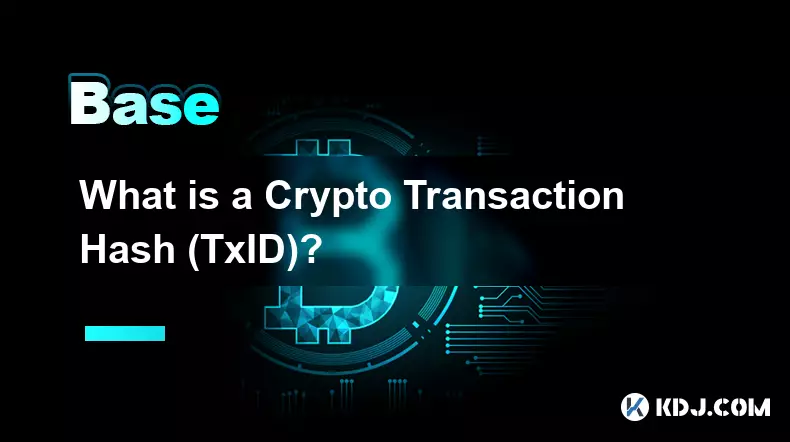
What is a Crypto Transaction Hash (TxID)?
Sep 07,2025 at 01:18pm
Understanding the Role of a Crypto Transaction Hash1. A crypto transaction hash, often referred to as TxID, is a unique identifier generated when a tr...
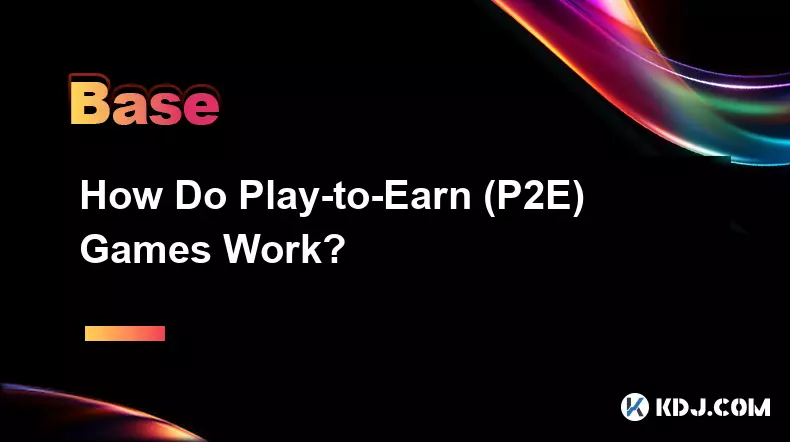
How Do Play-to-Earn (P2E) Games Work?
Sep 07,2025 at 10:54am
Understanding the Core Mechanics of Play-to-Earn Games1. Play-to-Earn (P2E) games operate on blockchain technology, allowing players to earn cryptocur...

What is Layer 1 and Layer 2 in Blockchain?
Sep 06,2025 at 10:00pm
The Evolution of Decentralized Exchanges in the Crypto Ecosystem1. Decentralized exchanges (DEXs) have reshaped how traders interact with digital asse...
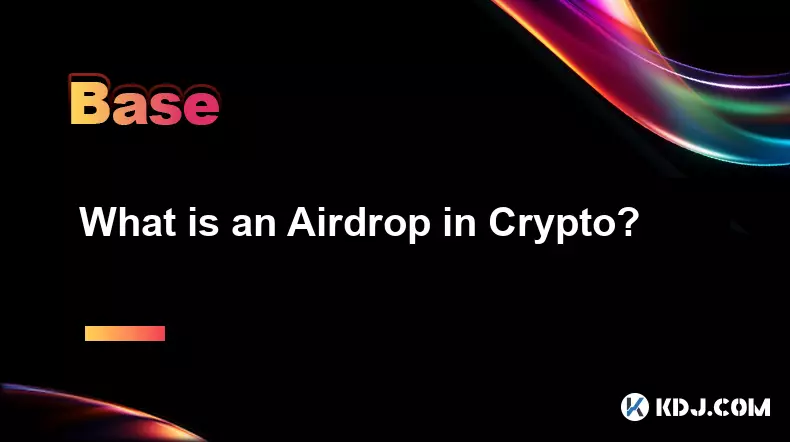
What is an Airdrop in Crypto?
Sep 07,2025 at 03:36am
What is a Crypto Airdrop?1. A crypto airdrop refers to the distribution of free tokens or coins to wallet addresses within the blockchain ecosystem. T...
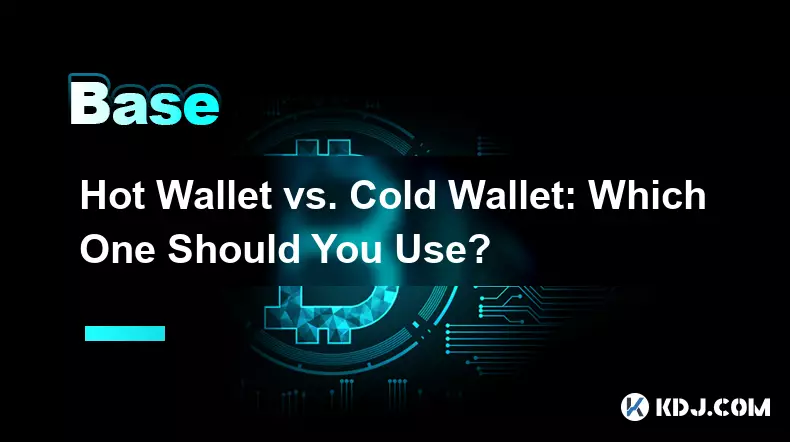
Hot Wallet vs. Cold Wallet: Which One Should You Use?
Sep 05,2025 at 06:19pm
Understanding Hot Wallets in the Cryptocurrency Ecosystem1. A hot wallet is a digital cryptocurrency wallet that remains connected to the internet at ...

What is "backtesting" a crypto trading strategy?
Sep 03,2025 at 10:55am
Understanding Backtesting in Crypto TradingBacktesting is the process of evaluating a trading strategy by applying it to historical market data. Trade...

What is a Crypto Transaction Hash (TxID)?
Sep 07,2025 at 01:18pm
Understanding the Role of a Crypto Transaction Hash1. A crypto transaction hash, often referred to as TxID, is a unique identifier generated when a tr...

How Do Play-to-Earn (P2E) Games Work?
Sep 07,2025 at 10:54am
Understanding the Core Mechanics of Play-to-Earn Games1. Play-to-Earn (P2E) games operate on blockchain technology, allowing players to earn cryptocur...

What is Layer 1 and Layer 2 in Blockchain?
Sep 06,2025 at 10:00pm
The Evolution of Decentralized Exchanges in the Crypto Ecosystem1. Decentralized exchanges (DEXs) have reshaped how traders interact with digital asse...

What is an Airdrop in Crypto?
Sep 07,2025 at 03:36am
What is a Crypto Airdrop?1. A crypto airdrop refers to the distribution of free tokens or coins to wallet addresses within the blockchain ecosystem. T...

Hot Wallet vs. Cold Wallet: Which One Should You Use?
Sep 05,2025 at 06:19pm
Understanding Hot Wallets in the Cryptocurrency Ecosystem1. A hot wallet is a digital cryptocurrency wallet that remains connected to the internet at ...

What is "backtesting" a crypto trading strategy?
Sep 03,2025 at 10:55am
Understanding Backtesting in Crypto TradingBacktesting is the process of evaluating a trading strategy by applying it to historical market data. Trade...
See all articles





















![Daily Level for 9/7/2025: Momentum by EnenzoGD (WITH COIN) [GD Daily Video #809] Daily Level for 9/7/2025: Momentum by EnenzoGD (WITH COIN) [GD Daily Video #809]](/uploads/2025/09/07/cryptocurrencies-news/videos/daily-level-momentum-enenzogd-coin-gd-daily-video/68bcd9494f8d8_image_120_90.webp)


